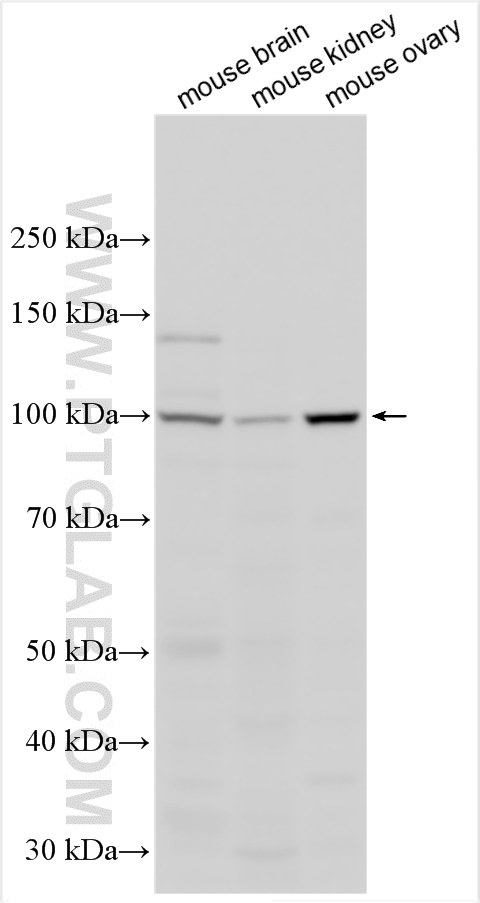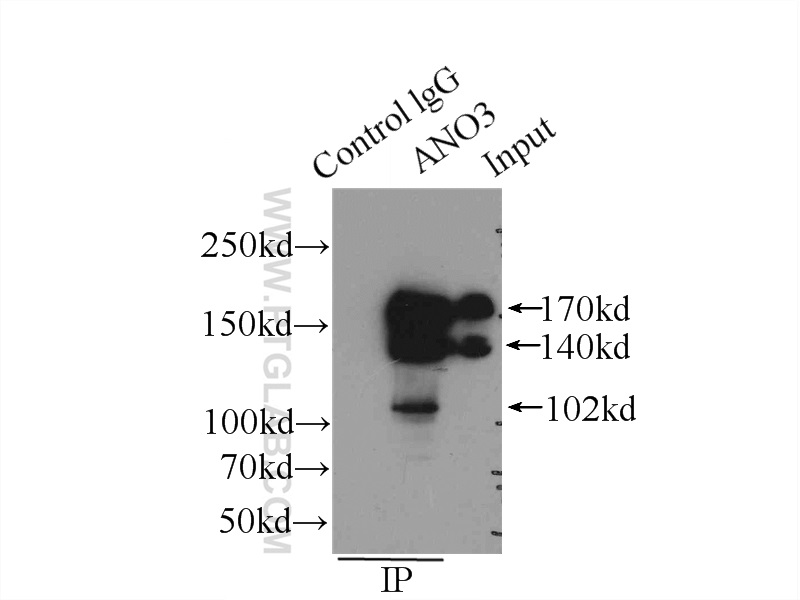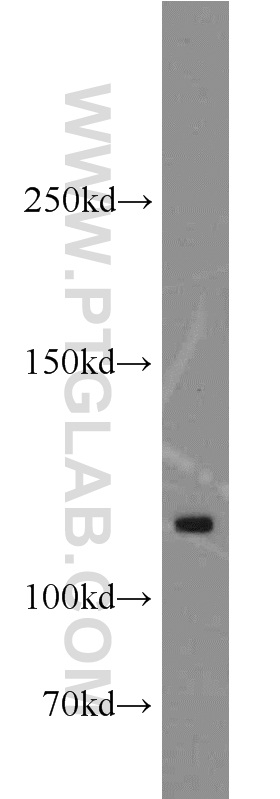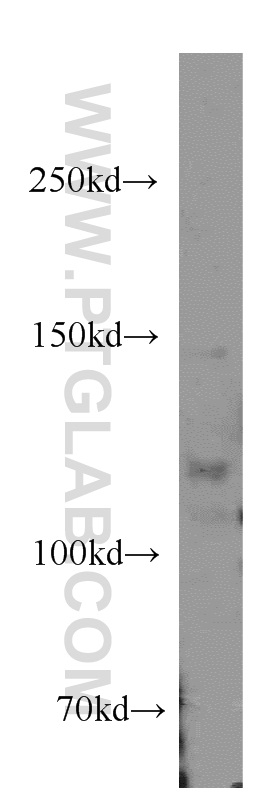验证数据展示
经过测试的应用
| Positive WB detected in | mouse brain tissue, mouse skin tissue, mouse ovary tissue, mouse kidney tissue |
| Positive IP detected in | mouse testis tissue |
推荐稀释比
| 应用 | 推荐稀释比 |
|---|---|
| Western Blot (WB) | WB : 1:500-1:1000 |
| Immunoprecipitation (IP) | IP : 0.5-4.0 ug for 1.0-3.0 mg of total protein lysate |
| It is recommended that this reagent should be titrated in each testing system to obtain optimal results. | |
| Sample-dependent, Check data in validation data gallery. | |
发表文章中的应用
| IF | See 1 publications below |
| IP | See 1 publications below |
产品信息
19489-1-AP targets ANO3 in WB, IF, IP, ELISA applications and shows reactivity with human, mouse samples.
| 经测试应用 | WB, IP, ELISA Application Description |
| 文献引用应用 | IF, IP |
| 经测试反应性 | human, mouse |
| 文献引用反应性 | rat |
| 免疫原 | Peptide 种属同源性预测 |
| 宿主/亚型 | Rabbit / IgG |
| 抗体类别 | Polyclonal |
| 产品类型 | Antibody |
| 全称 | anoctamin 3 |
| 别名 | Transmembrane protein 16C, TMEM16C, GENX-3947, C11orf25, Anoctamin-3 |
| 计算分子量 | 115 kDa |
| 观测分子量 | 100-115 kDa |
| GenBank蛋白编号 | NM_031418 |
| 基因名称 | ANO3 |
| Gene ID (NCBI) | 63982 |
| RRID | AB_10638489 |
| 偶联类型 | Unconjugated |
| 形式 | Liquid |
| 纯化方式 | Antigen affinity purification |
| UNIPROT ID | Q9BYT9 |
| 储存缓冲液 | PBS with 0.02% sodium azide and 50% glycerol , pH 7.3 |
| 储存条件 | Store at -20°C. Stable for one year after shipment. Aliquoting is unnecessary for -20oC storage. |
背景介绍
ANO3, also named as C11orf25, TMEM16C and GENX-3947, belongs to the anoctamin family. It may act as a calcium-activated chloride channel.
实验方案
| Product Specific Protocols | |
|---|---|
| WB protocol for ANO3 antibody 19489-1-AP | Download protocol |
| IP protocol for ANO3 antibody 19489-1-AP | Download protocol |
| Standard Protocols | |
|---|---|
| Click here to view our Standard Protocols |



